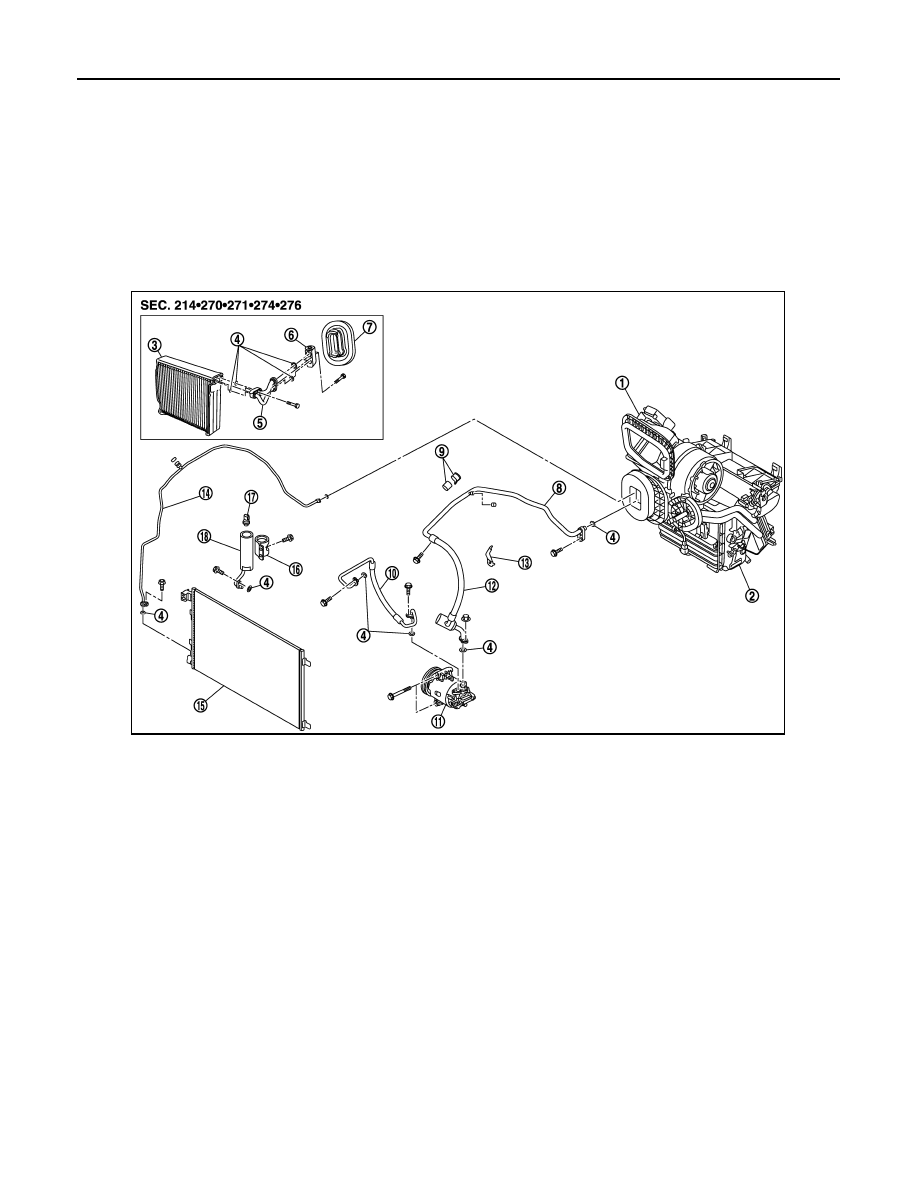Nissan Qashqai (2007-2010). Manual - part 866

HA-34
< ON-VEHICLE MAINTENANCE >
[AUTOMATIC AIR CONDITIONER (HR/MR)]
ELECTRICAL LEAK DETECTOR
2.
Connect a suitable A/C manifold gauge set (SST: J-39183) to the A/C service valves.
3.
Check if the A/C refrigerant pressure is at least 345 kPa (3.52 kg/cm
2
, 50 psi) above 16
°
C (61
°
F). If less
than specification, recover/evacuate and recharge the system with the specified amount of refrigerant.
NOTE:
At temperatures below 16
°
C (61
°
F), leaks may not be detected since the system may not reach 345 kPa
(3.52 kg/cm
2
, 50 psi).
4.
Perform the leak test from the high-pressure side (compressor discharge a to evaporator inlet j) to the
low-pressure side (evaporator drain hose k to shaft seal p). Perform a leak check for the following areas
carefully. Clean the component to be checked and move the leak detected probe completely around the
connection/component.
Compressor
Check the fitting of high- and low-pressure flexible hoses, relief valve and shaft seal.
Condenser
Check the fitting of condenser pipe assembly, high-pressure flexible hose and pipe.
Liquid tank
Check the fitting of radiator & condenser assembly and refrigerant pressure sensor.
Service valves
Check all around the service valves. Ensure service valve caps are secured on the service valves (to pre-
vent leaks).
NOTE:
After removing A/C manifold gauge set from service valves, wipe any residue from valves to prevent any
false readings by leak detector.
Cooling unit (Evaporator)
1.
Heater & blower unit assembly
2.
Heater & cooling unit assembly
3.
Evaporator
4.
O-ring
5.
Low pressure pipe 1 and high pres-
sure pipe 2 assembly
6.
Expansion valve
7.
Heater sealing
8.
Low pressure flexible hose and pipe
2
9.
Low pressure pipe 2 fixing clamp as-
sembly
10. High pressure flexible hose
11.
Compressor
12. Low pressure flexible hose
13. Low & high pipe bracket support
14. High pressure pipe 1
15. Condenser assembly
16. Liquid tank fixing bracket
17. Refrigerant pressure sensor
18. Liquid tank
E1KIA0037GB